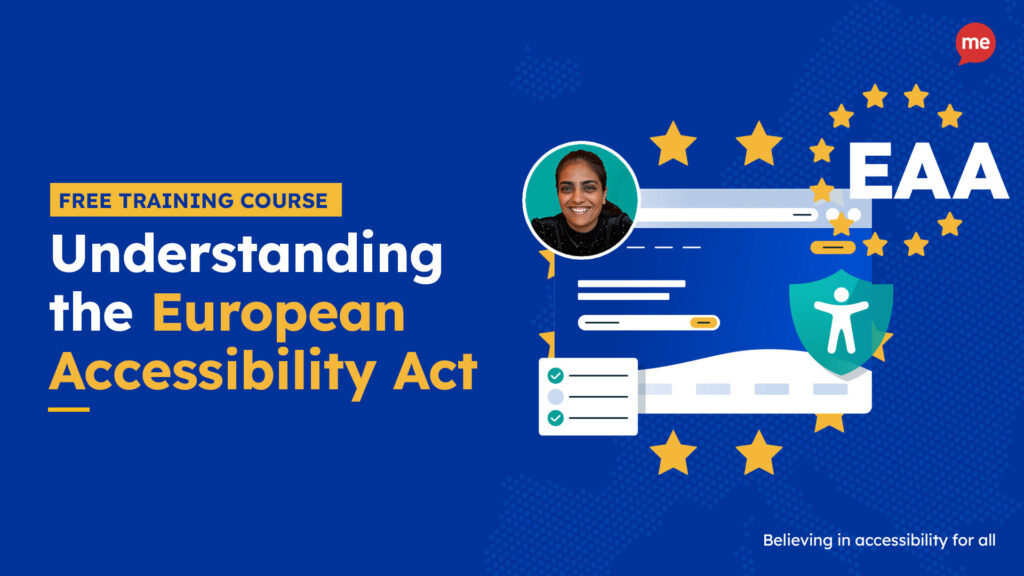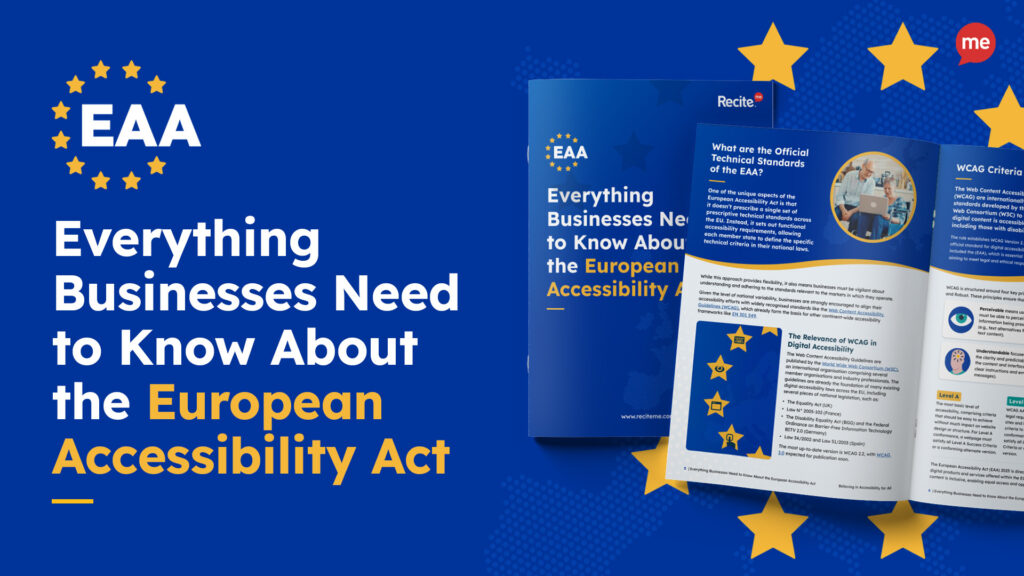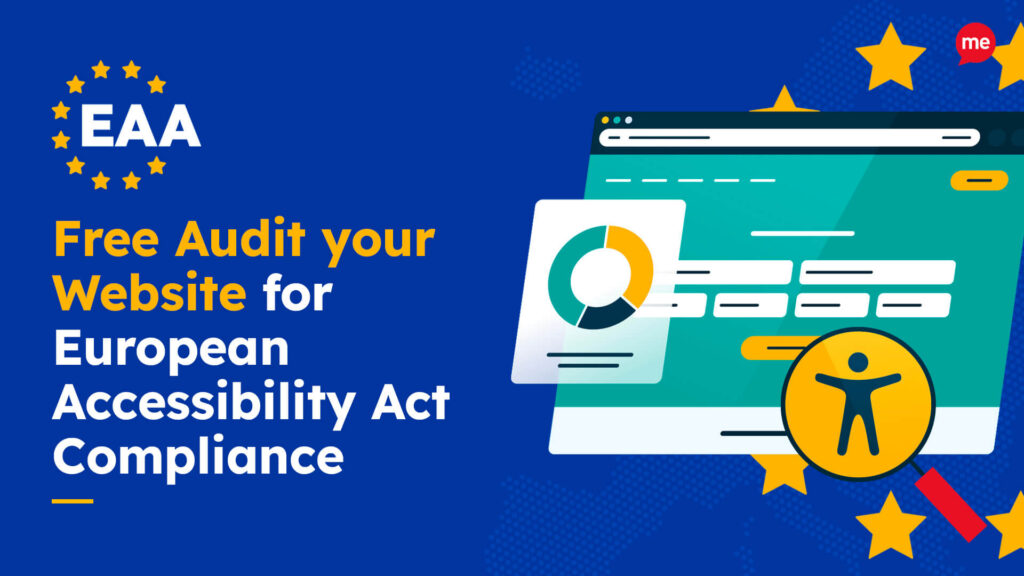Get Your Free European Accessibility Act Checklist
Download NowThe European Accessibility Act (EAA) in the Netherlands and other European Union member states, ensures equal access to online products and services for all. To avoid hindering your company’s success and to stay on the right side of the law, every business in the Netherlands should get to know the ins and outs of the EAA. Find out what it entails, how to stay compliant, and what will happen if you don’t. Let’s dive into the details.
What is the European Accessibility act?
The European Accessibility Act (EAA) is a groundbreaking piece of legislation that was created in 2019, but was first introduced by law in June of 2025. Born out of a growing need to provide disabled individuals with equal access to the digital and physical world, the Act mandates that a wide range of products and services must be made accessible to everyone. Beyond just brick and mortar stores and other physical businesses, the EAA extends to websites, mobile applications, e-commerce sites, online ticketing services, and any other form of digital platform.
If you haven’t heard of the EAA before, you may have heard of Web Content Accessibility Guidelines (WCAG). The WCAG is a set of technical standards set out by the World Wide Web Consortium (W3C) with the aim of making web content accessible to people with disabilities, and the EAA uses these guidelines as a foundation for its requirements.
Without getting too caught up in the details, the EAA ensures that businesses across the EU, including those in the Netherlands, adhere to the best practices of WCAG. So, by aligning your business with the different levels of WCAG, you can go a long way toward meeting the requirements for EAA, especially when it comes to your digital content.
Checking for EAA compliance is now easier than ever. At Recite Me, we offer a free website audit to spot any issues related to the European Accessibility Act and WCAG. You’ll get a clear action plan to help improve your website’s accessibility and meet EAA compliance.
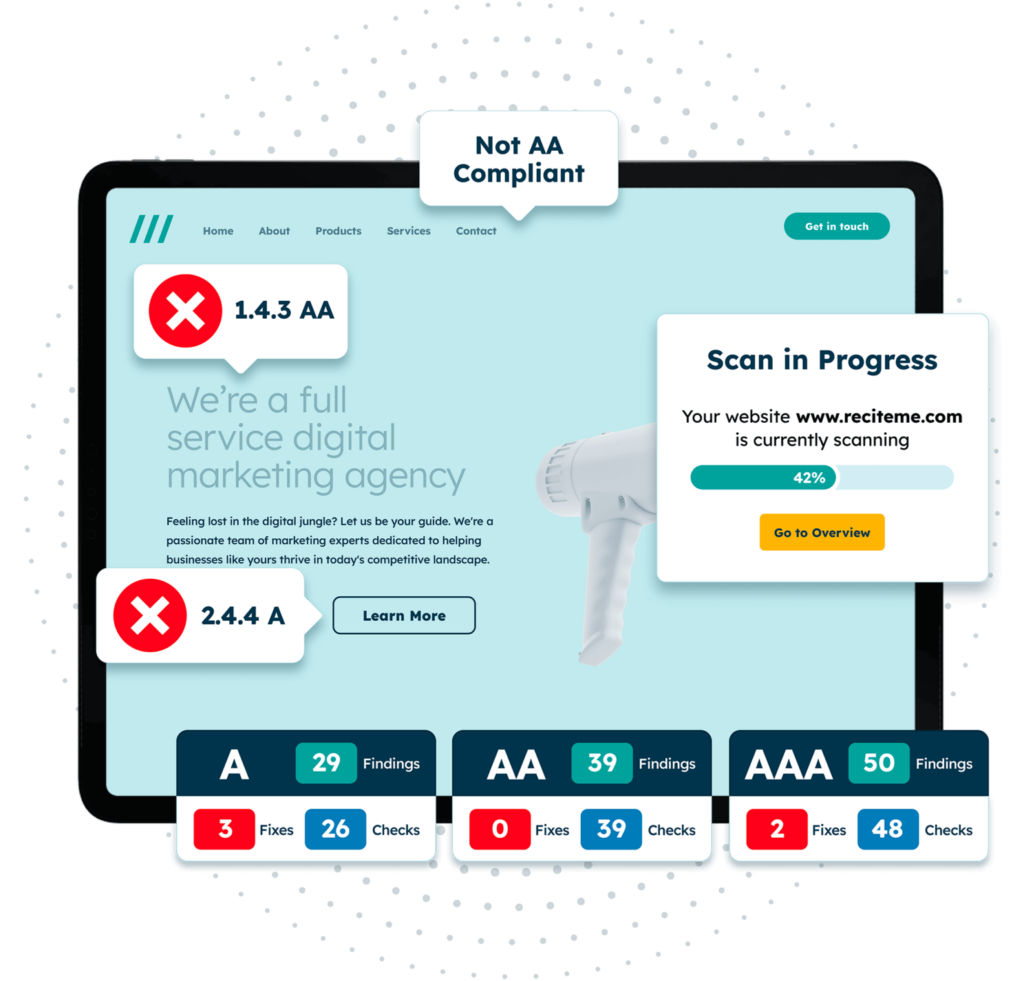
Legislation backing the European Accessibility Act in the Netherlands
In the Netherlands specifically, the legislator has opted for the European Accessibility Act to be implemented on a sectoral basis. So, organisations will find that any rules regarding the accessibility of products will be regulated by the Commodities Act, whereas any services will be regulated on different laws and acts depending on the type of service:
- E-Commerce Services: Dutch Civil Code.
- Electronic Communication Services: Telecommunications Act.
- Consumer Banking Services: Financial Supervision Act.
- Enforcement Rules: Consumer Protection Enforcement Act.
- Other services: Equal Treatment of Disabled and Chronically Ill People Act.
Global accessibility standards relevant to the European Accessibility Act
The Web Content Accessibility Guidelines (WCAG) set the global standard for accessibility and play a fundamental role in determining effective implementation of the EAA. Organisations should comply with WCAG 2.1 level A as a minimum requirement, although ideally striving for level AA and beyond.
What are the EAA requirements for businesses in the Netherlands?
Navigating the EAA’s requirements might seem daunting at first, but by breaking it down into some key categories, businesses in the Netherlands can more easily understand what’s needed to comply. Although the EAA applies to both physical and digital accessibility, this section will focus primarily on the latter.
Accessible Digital Content
A large part of the EAA is centred around digital content, meaning any business that publishes digital content or owns a website must comply with EAA in the Netherlands. This applies to just about every business, hence the importance of ensuring an inclusive online space.
As such, Dutch businesses must ensure that their websites, mobile apps, and other digital content are accessible to all users, including those with disabilities. There are many ways in which this can be achieved, such as tagging images with alternative text, captioning videos, and ensuring all content is compatible with a wide variety of assistive technologies, like screen readers.
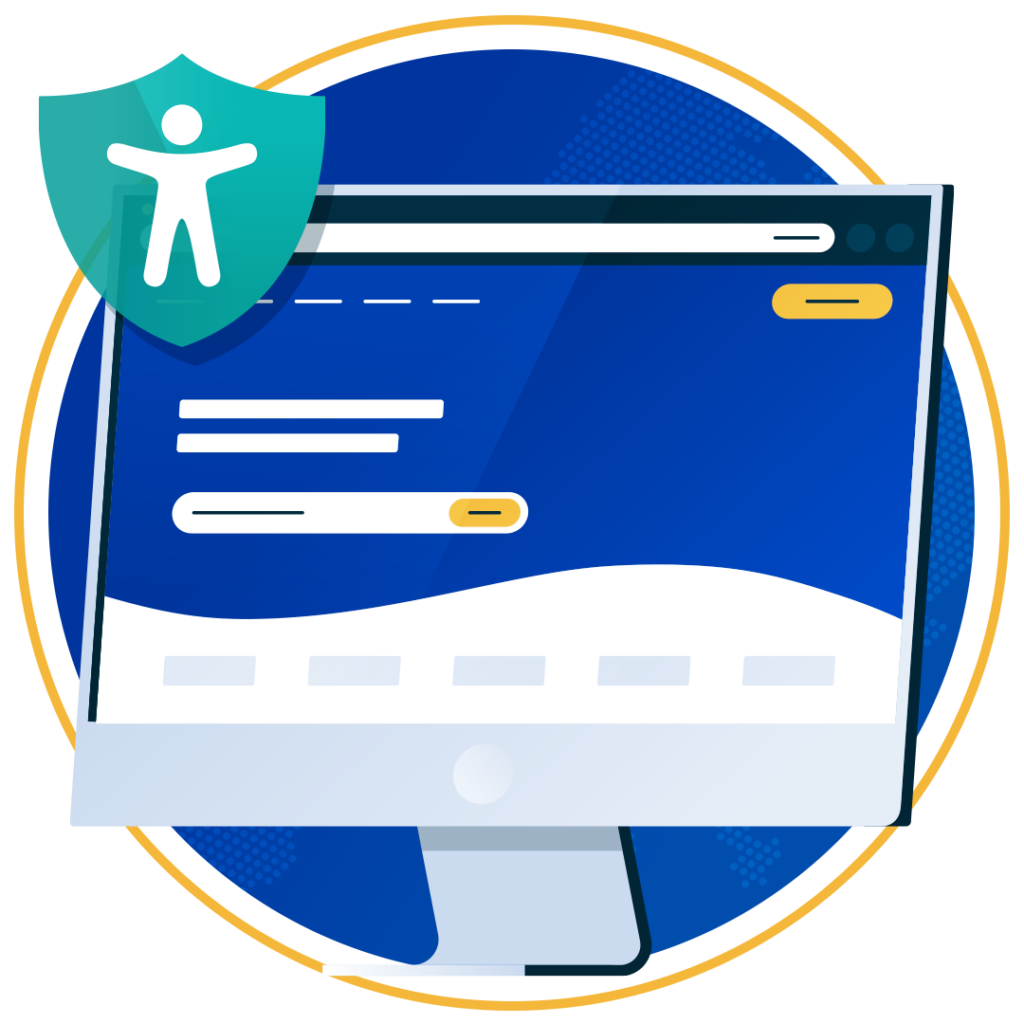
Consider, for example, an e-commerce site that sells tulip bulbs in the Netherlands. Each product image should have corresponding alt text, so that visually impaired customers can perceive product information in the same way as their sharp-sighted counterparts.
Accessible Documentation and Information
All product documentation, terms and conditions, and other informational materials must be provided in accessible formats. This might mean offering documents in large print, braille, or audio formats. It may also mean giving your users the option to customise content in the way that best suits their needs, by adopting software, such as Recite Me’s accessibility toolbar. These tools essentially allow users to edit colour contrasts, enlarge text, or even translate content into their native language.
Inclusive Customer Service
Under the EAA, businesses in Holland must also provide accessible customer service options, meaning you must offer multiple ways for customers to contact your business. Crucially, this must include options that suit individuals with disabilities, such as live chat, email, or accessible phone services.
For example, a Dutch telecom provider should ensure that its customer service helpline is compatible with text relay services, allowing hearing-impaired customers, who may struggle to communicate over the phone, to communicate with alternative means.
Which Netherlands organisations do the regulations apply to?
The EAA applies to a broad range of organisations in the Netherlands, encompassing both the public and private sectors. It is important to note that the EAA not only applies to large corporations, but can also apply to medium and small sized businesses, if they meet the eligibility criteria. This criteria includes 10+ employees and an annual turnover of more than €2 million.
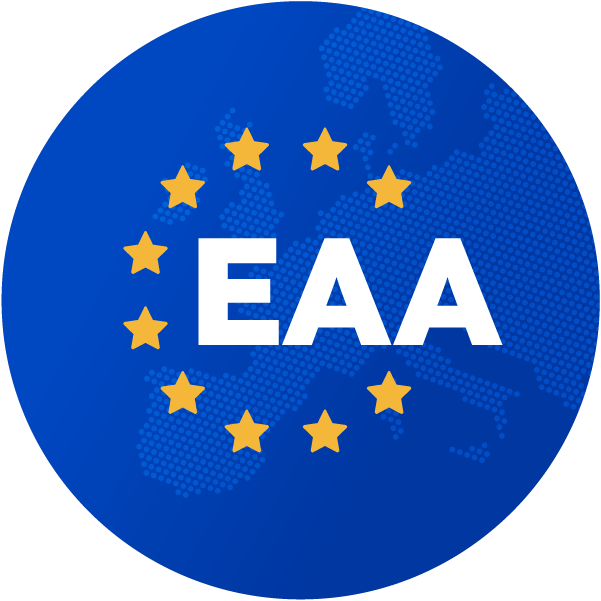
Here some examples of types of organisations that are particularly affected:
- Public sector entities: This includes government agencies, public transport providers, and educational institutions.
- Large corporations: Any multinational company with operations in the Netherlands must comply with the EAA to avoid significant legal repercussions.
- Small and medium enterprises (SMEs): While there are some exceptions, many SMEs that offer digital services or products must also comply with the EAA.
- Healthcare providers: Hospitals, clinics, and other healthcare institutions must ensure that their digital platforms and physical locations are accessible.
- Retail businesses: Both online and brick-and-mortar retail stores must make accommodations to ensure that their services are accessible to all customers.
What are the risks of non-compliance in the Netherlands?
Failing to comply with the EAA can have serious consequences for Dutch businesses, which is why it’s important to take compliance seriously. These risks can range from legal penalties to less tangible risks, such as reputational damage or loss of market share.
Legal Penalties
One of the most immediate risks of non-compliance is the possibility of facing legal action. Authorities in the Netherlands are empowered to enforce the EAA, and businesses that fail to meet accessibility standards could be subject to monetary fines or other penalties.
In the Netherlands the following fines can be awarded for failure to comply with EAA:
- The Dutch Media Authority may fine up to a maximum of €90,000.
- The Authority Consumers and Markets may fine up to €900,000. But, if the yearly turnover exceeds this amount, 1 to 10% of the turnover could be awarded.
There is also the cost and time implication of dealing with legal proceedings. For example, a Dutch tech company that does not make its software sufficiently accessible to visually impaired users might find itself in a costly legal battle brought about by frustrated customers who are unable to use the product. If unsuccessful, the company is likely to, at least, face some hefty fines in addition to eating various court fees and legal representation costs.
Reputational Damage
A business that fails to meet accessibility standards can quickly find itself in the spotlight for the wrong reasons. This could lead to a loss of customers, particularly as consumers lean more towards ethical purchasing decisions and become increasingly concerned about accessibility issues. Negative press is often followed by a significant drop in sales, which may not ever recover.
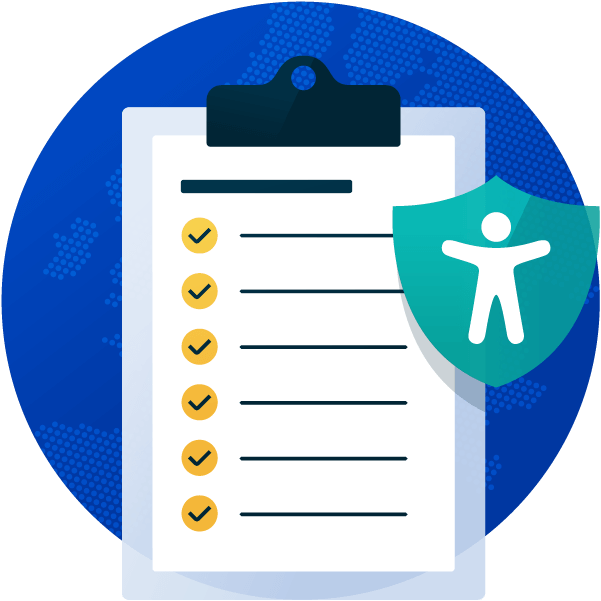
Loss of Market Share
Accessibility has become an increasingly important factor in consumer purchasing decisions as of late. Therefore, businesses that do not comply with the EAA, not only risk alienating their millions of disabled prospects, but they also risk excluding those customers who value inclusivity highly. Inevitably, these customers choose to take their business elsewhere, to competitors that offer more accessible services. This highlights the business case for making accessibility changes and shows how it is not just about ticking off compliance, but also about opening your business up to new markets.
Make sure your website meets the European Accessibility Act with our easy-to-follow EAA checklist. It covers all the key steps to get compliant before the deadline and helps you avoid penalties. Get started today!
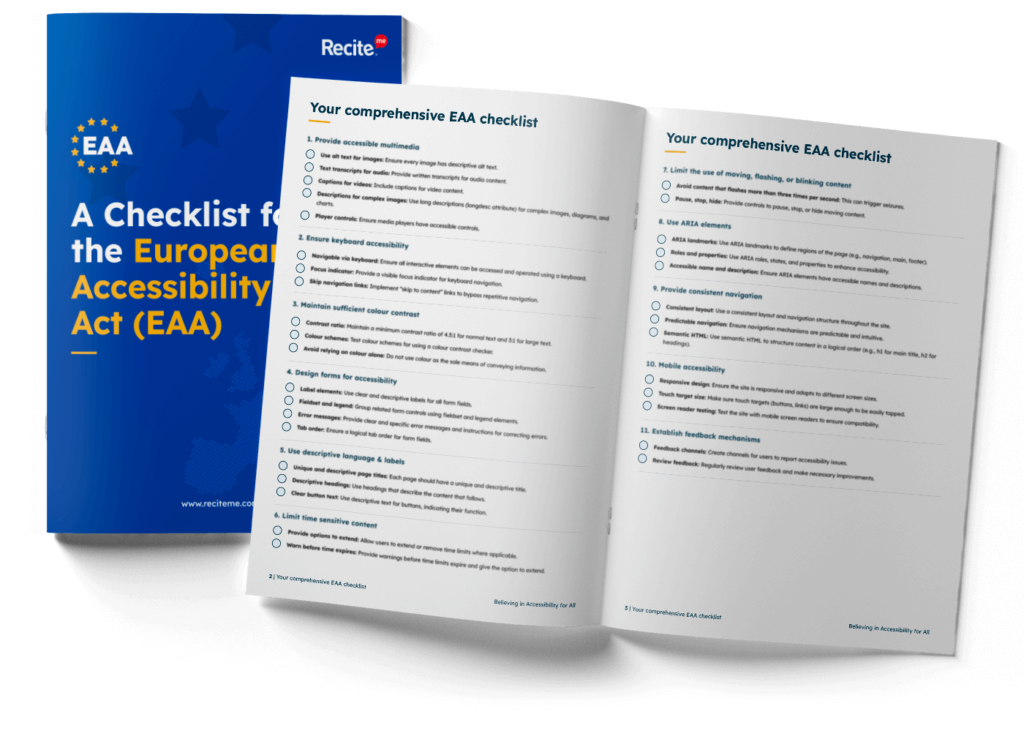
Steps to make your website EAA compliant in Netherlands
Understanding the importance of EAA compliance is one thing, but knowing where to start can be a daunting prospect. To help you navigate the process, we’ve put together a step-by-step guide to making your website EAA compliant.
1. Conduct an Accessibility Audit
The first step is to conduct a comprehensive European Accessibility Act compliance audit of your website. After all, you need to know where you are currently at to know where you are going. An automated tool, like Recite Me’s accessibility checker, can help you quickly identify what changes need to be made by scanning your digital content for any non-compliant features.
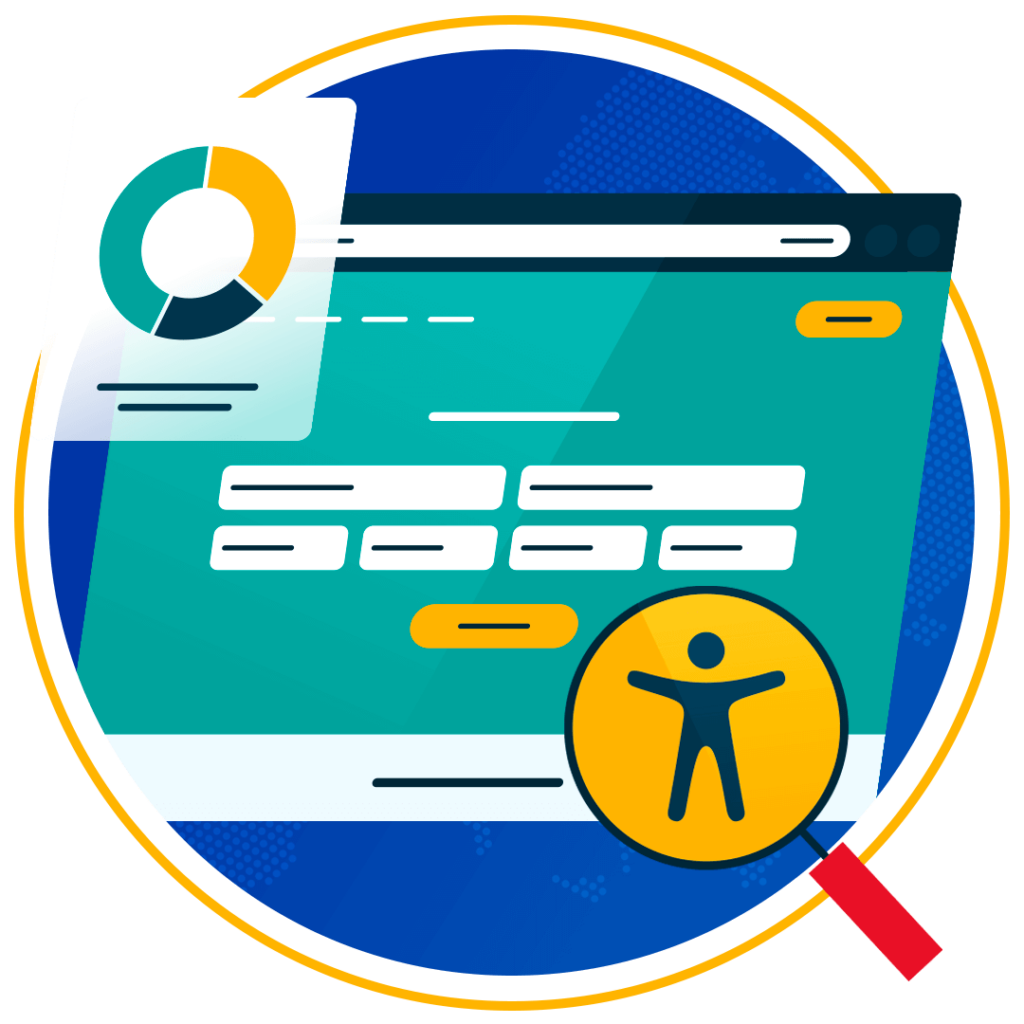
2. Regularly Test and Update
Unfortunately, accessibility cannot just be achieved, it needs to be maintained. Regularly testing your website and updating it as required is essential if you want to maintain compliance with the EAA in the Netherlands.
Schedule periodic audits and make use of automated tools to stay on top of any new issues that arise. Alternate between automated and manual testing where possible, allowing a team of disabled users to provide relevant feedback on the accessibility of your products and services.
3. Provide Accessible Content
Although similar, there is a difference between implementing accessible design features and providing accessible content. The former focuses on accessible web design, whereas the latter focuses more on the content being uploaded or published to the website.
This involves offering content in a range of formats, such that the content, whether written, visual, or spoken, can be consumed by anyone, regardless of any impairments. For example, captioning videos, offering transcripts for audio content, and using clear, simple language when publishing PDF or other documents.
4. Implement Accessible Design Features
Once you’ve got a rough idea of where you stand in terms of accessibility, the next step is to implement accessible design features. This could include adjusting colour contrast, adding alt text to images, or ensuring that your website is navigable via keyboard. You can see all these different topics covered in our checklist for EAA compliance.
For example, by providing sufficient colour contrast between text and background, businesses can make their content more easily digestible for users with visual impairments. Similarly, adding alt text to images makes them compatible with screen readers, allowing blind users to perceive said images via their written descriptions.
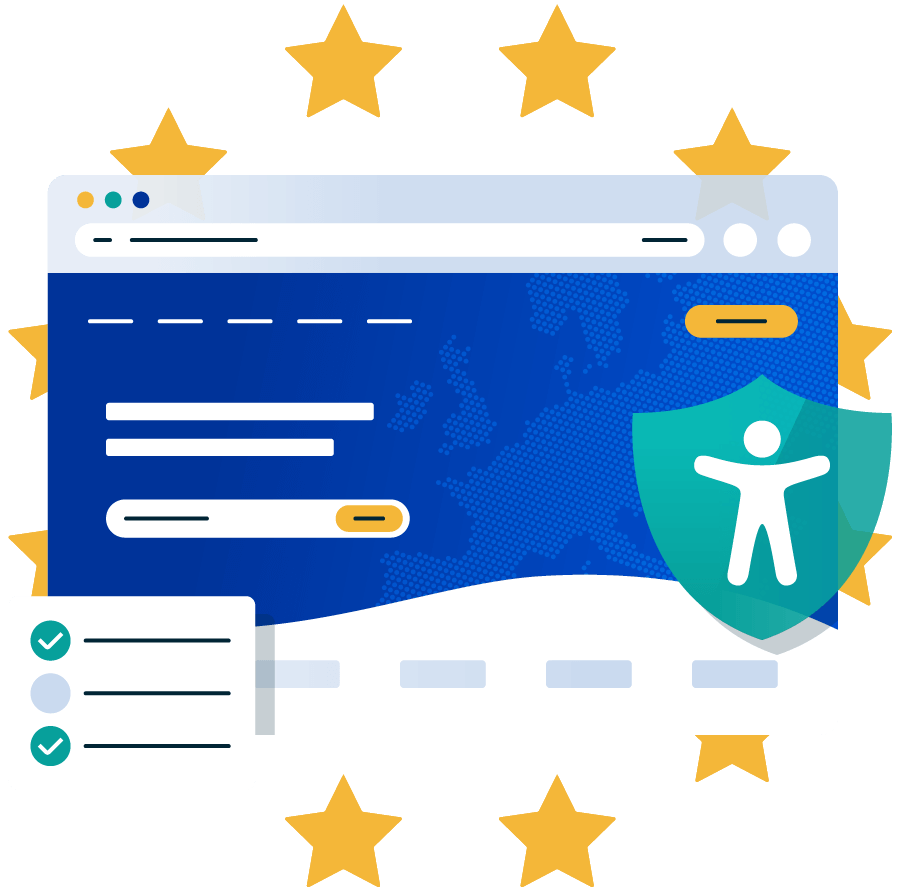
A huge range of EAA web design features exist to suit a huge range of needs. Often, the best option might be to give your users ultimate control by letting them customise your content according to their specific requirements. Various products on the market today, like Recite Me’s accessibility toolbar, offer this functionality.
5. Train Your Team
In order to maintain accessibility long into the future, you have to instil a culture of inclusion within your business. To do this, train your team regularly on accessibility best practices, making sure that everyone involved understands what it takes to be EAA compliant. Since regulations are often updated, you should also be ready to inform your team of any relevant changes.
Be sure to check out the Recite Me EAA training course for free. Use it to fine-tune your European Accessibility knowledge and share the course with your colleagues for department growth and organisational compliance.
Need more help becoming EAA compliant?
The following resources are packed full of actionable tips and expert advice for making your digital content compliant with the European Accessibility Act:
Free EAA Compliance Training
Take the first step to European Accessibility compliance by completing our EAA training course.
Free EAA Compliance Guide
Ensure your organisation is meeting the necessary requirements for European Accessibility Act compliance.
Free EAA Audit of your Website
Download a free accessibility check of your website. This report will highlight any EAA non-compliance and how to fix it.

